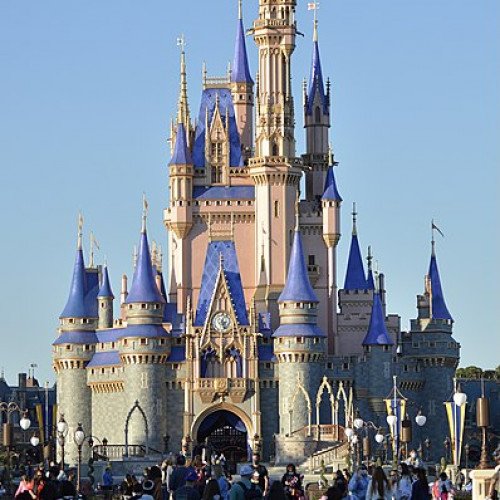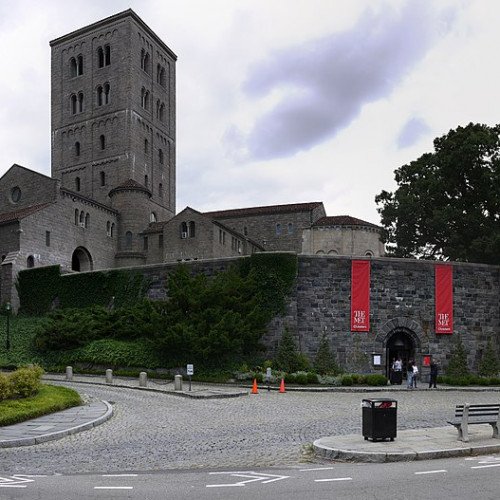Castles of "United States" CINDERELLA CASTLE vs THE CLOISTERS

CINDERELLA CASTLE
Cinderella Castle is Cinderella's home fairy tale castle and the icon at the center of two Disney theme parks: the Magic Kingdom at Walt Disney World, and Tokyo Disneyland at the Tokyo Disney Resort. Both serve as the flagship attraction for their respective theme parks. Along with Sleeping Beauty Castle, the Castle is a main symbol of The Walt Disney Company. Cinderella Castle was inspired by a variety of real and fictional palaces. These included Château d'Ussé, Fontainebleau, Versailles and the châteaux of Chenonceau, Pierrefonds, Chambord, Chaumont and the Alcázar of Segovia but primarily, and most obviously, Neuschwanstein Castle in Bavaria. Other sources of inspiration include the spire of Notre-Dame de Paris, the Moszna Castle in Poland, built in the 18th century, and the Tyn Church in Prague, Czech Republic, built in the 14th century. The chief designer of the castle, Herbert Ryman, also referenced the original design for the castle in the film franchise Cinderella and his own well-known creation — the Sleeping Beauty Castle at Disneyland in California.
Statistics for this Xoptio

THE CLOISTERS
The Cloisters, also known as the Met Cloisters, is a museum in Fort Tryon Park in Washington Heights, Manhattan, New York City, specializing in European medieval art and architecture, with a focus on the Romanesque and Gothic periods. Governed by the Metropolitan Museum of Art, it contains a large collection of medieval artworks shown in the architectural settings of French monasteries and abbeys. Its buildings are centered around four cloisters—the Cuxa, Saint-Guilhem, Bonnefont and Trie—that were acquired by American sculptor and art dealer George Grey Barnard in France before 1913, and moved to New York. Barnard's collection was bought for the museum by financier and philanthropist John D. Rockefeller, Jr. Other major sources of objects were the collections of J. P. Morgan and Joseph Brummer. The museum's building was designed by the architect Charles Collens, on a site on a steep hill, with upper and lower levels. It contains medieval gardens and a series of chapels and themed galleries, including the Romanesque, Fuentidueña, Unicorn, Spanish and Gothic rooms. The design, layout, and ambiance of the building is intended to evoke a sense of medieval European monastic life. It holds about 5,000 works of art and architecture, all European and mostly dating from the Byzantine to the early Renaissance periods, mainly during the 12th through 15th centuries. The varied objects include stone and wood sculptures, tapestries, illuminated manuscripts and panel paintings, of which the best known include the c. 1422 Early Netherlandish Mérode Altarpiece and the c. 1495–1505 Flemish Hunt of the Unicorn tapestries. Rockefeller purchased the museum site in Washington Heights in 1930, and donated it and the Bayard collection to the Metropolitan in 1931. Upon its opening on May 10, 1938, the Cloisters was described as a collection "shown informally in a picturesque setting, which stimulates imagination and creates a receptive mood for enjoyment".